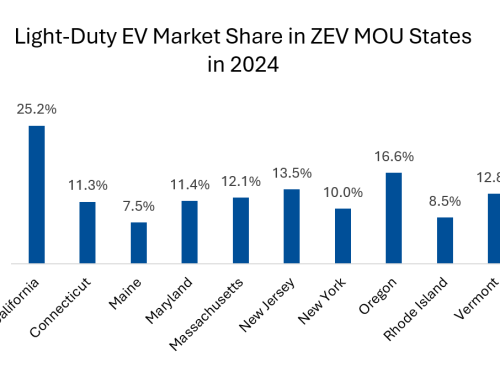
Image Source: Shutterstock
Last Friday marked the two-year anniversary of the Inflation Reduction Act (IRA), which has proven to be one of the most significant pieces of federal climate legislation in U.S. history. IRA has unlocked billions of dollars across various clean energy programs, creating jobs and generating climate benefits.
While the Infrastructure Investment and Jobs Act (IIJA) has made substantial transportation funds available, IRA has allocated approximately $14.5 billion (excluding tax credit estimates) specifically for transportation-related initiatives, including the deployment and manufacturing of electric vehicles (EVs). In the two years since the IRA became law, nearly $8 billion has been awarded to transportation projects, from manufacturing to electrification and accessibility.
Notable funding awards provided by the IRA over the past year include:
-
$1.7 billion from the Domestic Manufacturing Auto Conversion Grants program: In July 2024, the Biden administration announced $1.7 billion in awards to convert eleven shuttered or at-risk auto manufacturing and assembly facilities into EV and EV component manufacturing sites. These facilities are located in eight states: Michigan, Ohio, Pennsylvania, Georgia, Illinois, Indiana, Maryland, and Virginia. The funding was distributed through the Domestic Manufacturing Auto Conversion Grants program, which supports the conversion of existing facilities to EV manufacturing.
-
$1.18 billion from the Climate Pollution Reduction Grant program: The Climate Pollution Reduction Grant program (CPRG) awarded nearly $1.18 billion to transportation electrification projects, reflecting a strong commitment to reducing transportation emissions. These funds are part of a broader effort to address greenhouse gas pollution across six critical sectors: transportation, electric power, buildings, industry, agriculture, and waste management. CPRG funding awarded a total of $4.3 billion across all sectors, with the transportation sector receiving the most funding.
-
$3.16 billion for the Neighborhood Access and Equity program: Together with the Reconnecting Communities Pilot program, the Neighborhood Access and Equity program (NAE) awarded $3.16 billion to 132 projects to support transportation planning, infrastructure, and accessibility in disadvantaged communities. NAE-funded projects include redeveloping a brownfield in Montgomery, Alabama into a charging station and microgrid and installing charging infrastructure along a major freight corridor in San Diego Bay.
The IRA has also introduced several EV tax credit programs designed to boost consumer demand and promote EV manufacturing in the United States. Among the most popular is the Clean Vehicle Tax Credit (30D), which offers consumers up to $7,500 for purchasing vehicles that meet specific criteria, including assembly in North America and compliance with critical mineral requirements. In July 2024, the IRS reported $1.5 billion in uptake between this credit and the Used Clean Vehicle Credit (25E) which offers up to $4,000 for qualifying used EVs. These two tax credits have helped more than 250,000 consumers purchase new or used EVs. On the manufacturing side, the Qualifying Advanced Energy Project Credit (48C) has attracted significant investments in EV and battery manufacturing within the United States, with eight facilities receiving approximately $565 million in tax credits through the program.
Looking ahead, the third year of the IRA is poised to start strong, with funding opportunities for several programs recently closed and awaiting award announcements. These include $932 million for the Clean Heavy Duty Program, $2.79 billion for the Clean Ports Program, and $1.2 billion for the Low Carbon Transportation Materials Grant Program.


